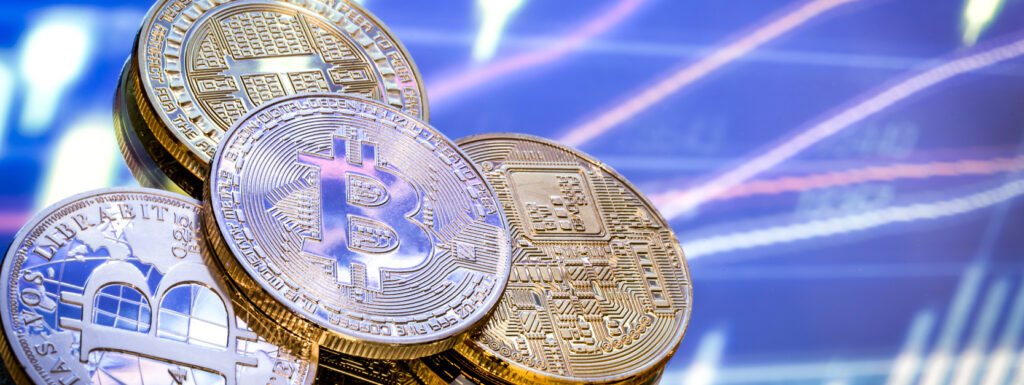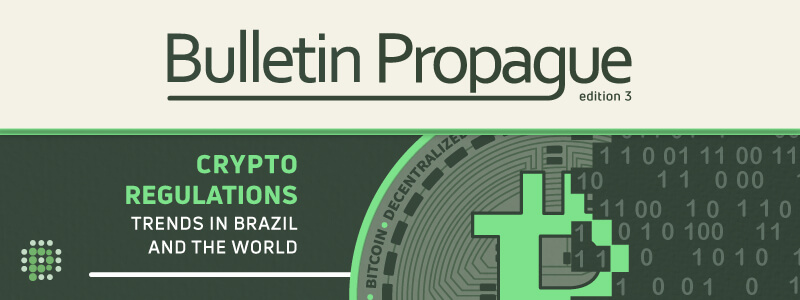At least 41 central banks had already expressed an opinion on the possibility of issuing some form of digital currency by the end of 2020, according to Bank for International Settlements (BIS) records.
The initiatives cover all continents and are advancing both in developed economies where cash may disappear with digitalization, as is the case in Sweden, and in developing economies where paper money is the only means of payment available to the unbanked.
China is currently emerging on the international scenario with tests that already add up to tens of millions of digital yuans. Brazil is also part of the movement, and may have its own digital currency in the coming years. But after all, what is digital currency and why are central banks interested in issuing it?
What is digital currency?
Central bank digital currencies, known by the acronym CBDC or govcoin, are digital representations of monetary values: a number registered in computer systems.
Central bank-issued digital currency is a liability of the monetary authority in the same way as a banknote, the difference being that CBDCs only exist on a virtual plane. This means that digital currencies have guaranteed convertibility with the conventional national currencies, unlike cryptocurrencies, which are not issued by any state-recognized authority.
Other forms of electronic money have already been in circulation for some time. The reserve accounts kept by private banks at the central bank are examples of public electronic money, while individuals’ deposits at commercial banks are examples of private electronic money.
However, these examples lack one fundamental characteristic of cash: universal access. That is, only account holders of a certain bank can hold and transact value on deposits at that bank; traditional cash, on the other hand, can be used by any person or company that has the banknotes in hand, at all times. The idea is that digital currencies combine the convenience of electronic money with the accessibility and soundness of central bank money.
What is digital currency in practice
A CBDC can be designed for use in retail payments by the general public or limited to large transactions between financial institutions and the central bank (wholesale). In wholesale, digital currency fulfills the function of modernizing the clearing and settlement arrangements between participants in the financial system.
The retail digital currencies will function as a new infrastructure for digital payments. They can be used to make electronic peer-to-peer transfers and online mobile payments, or offline transactions via devices at the point of sale. In practice, retail CBDCs look like digital wallets.
Due to the central banks’ guarantee, fiat digital currencies also function as a store of value: in other words, they might be an option for putting money away for a while, in the same way as keeping paper bills in a wallet.
Why are central banks interested in issuing digital currencies?
Digitalization of payments
One of the main reasons for central banks to issue digital currency is to keep track of the process of digital transformation of payments. CBDCs can be a secure, cheap and efficient alternative for making payments – domestic and international.
During the pandemic, the health measures of social isolation accelerated the shift in habits toward a preference for digital payments. This has occurred both because of the rise of e-commerce and other forms of remote shopping, and due to the public’s choice of contactless payments in brick-and-mortar stores.
Today, payments are already facilitated by other digital solutions such as public instant payment systems and private digital wallet solutions. However, these solutions rely on access to private money, usually in the form of a bank account, and do not safeguard the anonymity of payers and payees. This is one differentiator that CBDCs can bring to consumers.
Inclusion for a cashless society
The rapid decline in the use of cash in countries like Sweden points to the possibility of a future of payments in a cashless world. As firms stop accepting banknotes as a payment method, how will people who do not have access to cards or mobile phones be able to take part in the economy?
With digital currency, every citizen could have an account held by the central bank or receive a sort of token – a code that is equivalent to an amount of CBDCs – to use at any establishment. Thus, digital currencies may become an alternative to include vulnerable populations in the payment system and reduce the use of physical money in countries where the current banking system does not reach a large part of the population, as is the case in Brazil.
The emergency cash transfer policies in response to the COVID-19 crisis have cast even greater light on this issue. In several countries, governments were faced with the need to transfer money to residents in a fast, secure, and inclusive way, without people having to leave their homes.
The rise of global private currencies
Another important motivation behind CBDC initiatives is to maintain control over the fundamentals of monetary policy in a context where national currencies compete with cryptocurrencies, global private digital currencies. In June 2019, Facebook announced the Diem (formerly Libra) project, stating a mission to “create a simple, global payment system and financial infrastructure that empowers billions of people.”
If the population replaces the national currency with some other form of money as the main circulating medium, the central bank cannot perform essential tasks such as setting the basic interest rate, controlling the price level, managing exchange rate policy, and supervising and ensuring the functioning of the payment system.
This risk is especially pronounced in countries that face high inflation, as individuals and firms could quickly adopt private digital currency trying to protect themselves from the loss of value of the national currency.
The possible effects of private digital currencies have been on the radar of central banks since their inception about 10 years ago. However, cryptocurrencies had not emerged as credible options as means of payment or store of value for the general public and were restricted to niche investors. The prospect of a private currency with global penetration worries central banks all over the the world.
Will digital currency replace cash?
There is some speculation about the effect that retail digital currencies will have on the paper money we know today.
Banknotes and coins are not going to “end” – at least, not in the near future. Central banks should continue to issue enough banknotes to meet the demand of those who prefer to use cash money.
The central banks’ idea is that as people become increasingly used to electronic ways of storing and transferring value, the public’s choice for digital currency will become natural.
From the central banks’ point of view, the two forms of currency – physical or digital – are virtually indifferent as circulating currency. However, CBDCs do have some advantages: they can be programmed, they allow greater control over financial flows in the country, and they have reduced costs compared to issuing paper money.
For the public to adopt digital currencies as the preferred currency, they need to be at least as convenient as cash. The role of central banks will be to offer both options so that companies and individuals gradually replace paper money with digital currency.
Digital Real: Brazil’s digital currency may be near
Here in Brazil, the Central Bank is studying the implementation of a retail digital currency, which should be launched between 2022 and 2023. The digital real will be available to Brazilians to pay for products and services, make transfers, and even cross-border payments.



